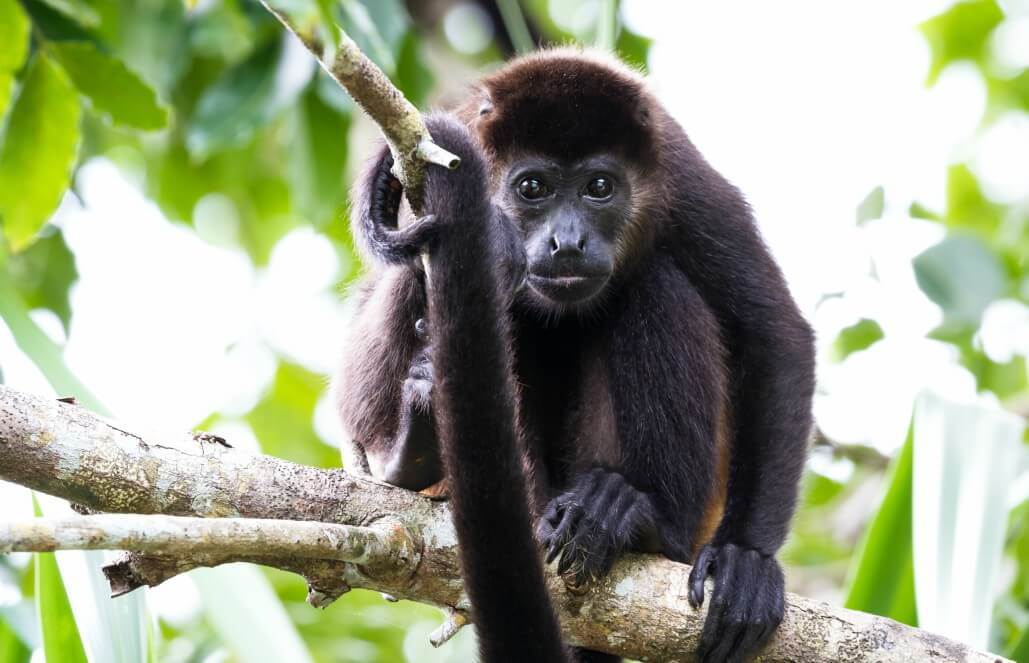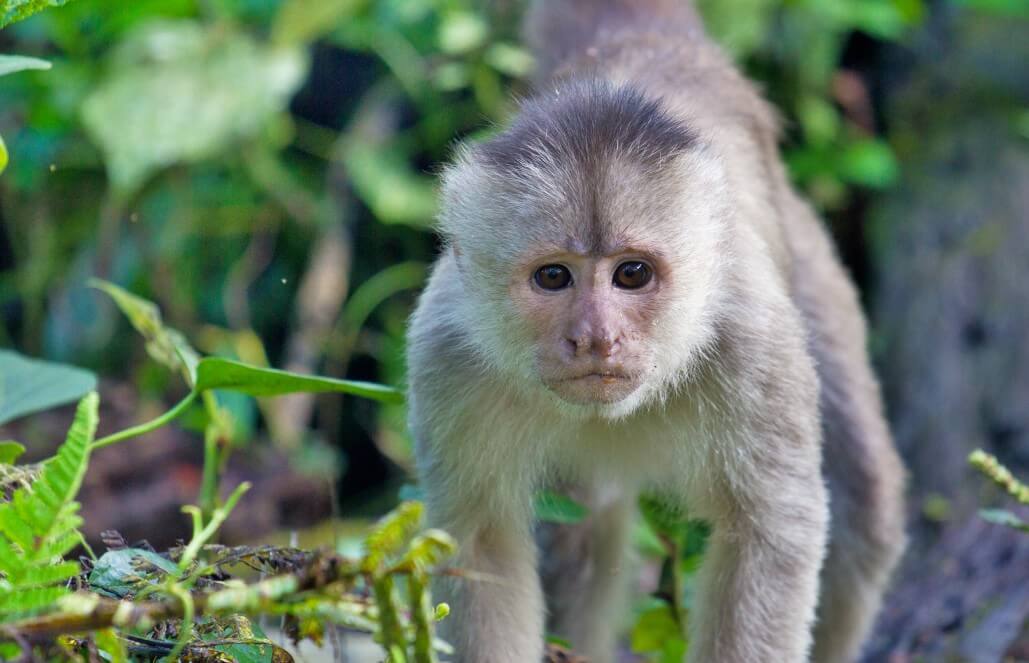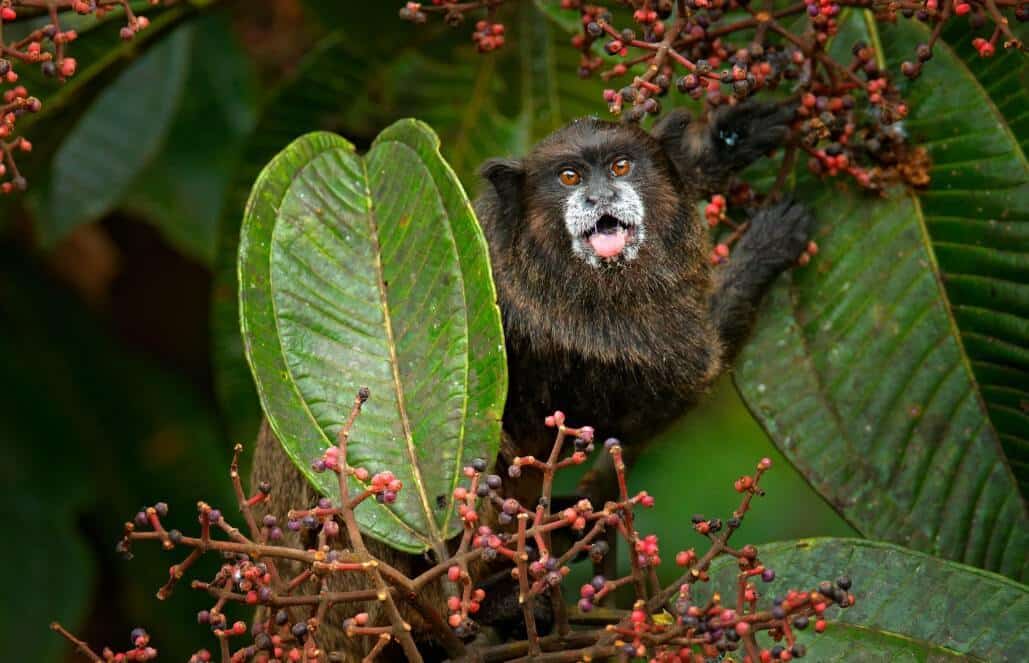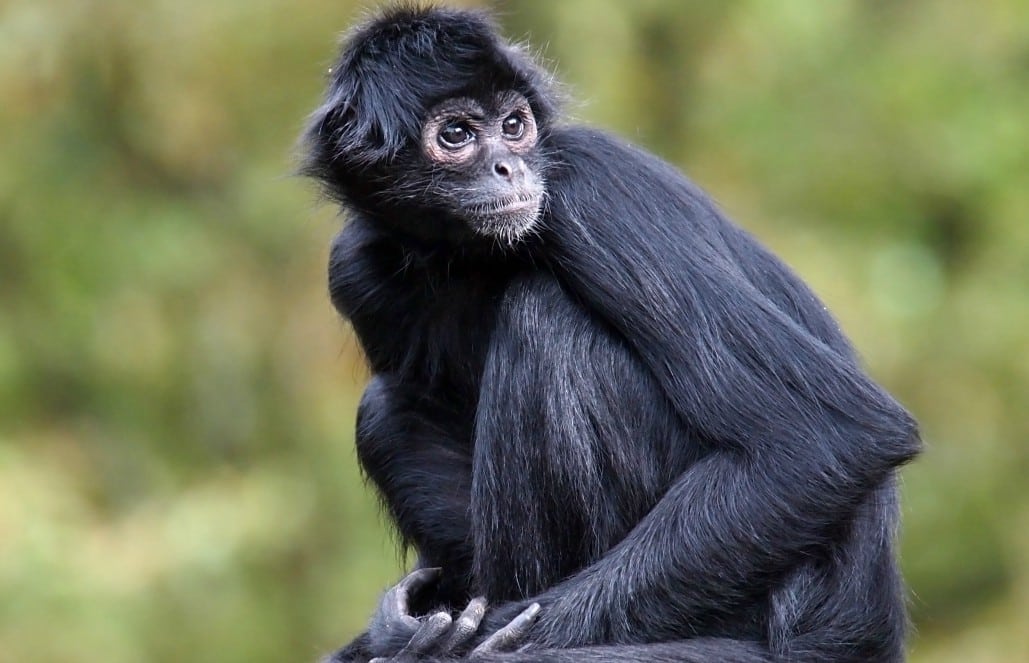Ah, the rainforest. The gentle chirping of brightly-colored birds, the flow of a river, the crunch of deep green leaves on the floor. No wonder so many monkeys live in the Amazon; it is a tropical, yet humid, paradise.
Monkeys that call the Amazon Rainforest home can be referred to us “rainforest monkeys.” Monkey species that are native to rainforests include howler monkeys, spider monkeys, capuchin monkeys, squirrel monkeys, tamarins and marmosets. These monkeys, and actually all monkeys that are native to South America, are referred to as New World monkeys. This phrasing refers to the theory that 40 million years ago there was a split between the Simiiformes infraorder, which led to the evolution of the current South and Central American monkeys we are familiar with, while the second half (African apes) became known as the Old World monkeys.
5 monkeys that can be found in Ecuador
1. Ecuadorian mantled howler (Alouatta palliata aequatorialis)

As the name suggests, howler monkeys like to make some noise! Their territorial calls can be heard up to three miles away, in fact. These monkeys are quite large, too. They can weigh up to 22 pounds, and have tails that are three feet long! There are two howler monkey subspecies that are currently endangered- the Yucatán black howler (found in Central America) and the Maranhão Red-handed howler (native to Brazil.) The Ecuadorian mantled howler is luckily not endangered.
2. Common Squirrel Monkey (S. cassiquiarensis/ S. cassiquiarensis macradon)

Squirrel monkeys are tiny primates, weighing less than three pounds on average! Though small, these monkeys like to live big…in big groups, that is. These monkeys can live in groups of up to 500. Unlike other rainforest monkeys, they do not use their tails to climb. Squirrel monkeys in Central America are classified as endangered, but the squirrel monkeys found in South America, including in Ecuador, are not classified as such. “Common squirrel monkeys” are a non-endangered subspecies found in Ecuador. There is still a debate of whether or not the squirrel monkey found in Ecuador is a species that is separate from the other squirrel monkeys.
3. Ecuadorian capuchin (Cebus aequatorialis)

These white-fronted, extremely furry little monkeys are considered to be the most intelligent of the New World monkeys. Many people, both legally and illegally, keep these monkeys as pets, due to their physical attractiveness. They were used as service animals until 2010. They live in groups of around 30, weigh only four pounds at most, and can live to be 45 years old! The Ecuadorian capuchin, unfortunately, is currently classified by the IUCN as “critically endangered.”
4. Brown-mantled tamarin (Saguinus fuscicollis)

The brown-mantled tamarin, also commonly referred to as the saddlebag tamarin, are quite the fascinating monkey. These animals are notorious when it comes to housing. They often wait for tiny pygmy monkeys to dig holes in trees, and then bully the pygmy monkeys away and take over the house. Although their population is decreasing, the species is common and widespread, and their habitat is not heavily fractured. They are therefore not of current concern for endangerment.
5. Black-headed spider monkey(Ateles fusciceps)

Spider monkeys got their name from the shape that they mimic as they hang by tree branches. The black-headed spider monkey is a subspecies of the spider monkey. The black-headed spider, found in Ecuador, Colombia and Panama, is classified as “critically endangered.” On a sad note, all subspecies of spider monkeys are either classified as “endangered” or “critically endangered” by the IUCN. Black-headed spider monkeys are threatened by both habitat loss and poachers.
How can you help the monkeys of Ecuador?
In Ecuador, it is illegal yet extremely common for people to keep monkeys as pets. Once the monkeys get to sexual maturity, however, they can become aggressive, which leads to their owners abandoning them. It is also extremely difficult to find an “exotic veterinarian” to care for a sick or injured monkey. Other factors that lead to sanctuaries rescuing monkeys include deforestation and poachers.
GoEco works with an amazing organization in the heart of the Amazon Rainforest in Ecuador that has rescued many different species of monkeys. The Rainforest Monkey Sanctuary takes in both abandoned and injured monkeys. The injured monkeys go through rehabilitation, and are released back into the wild once healed. In addition to caring for injured monkeys, the sanctuary also works with the local community to promote conservation and wildlife education.
What are you waiting for? Grab your suitcase and head to Ecuador to care for injured or endangered rainforest monkeys, right in the Amazon itself!









